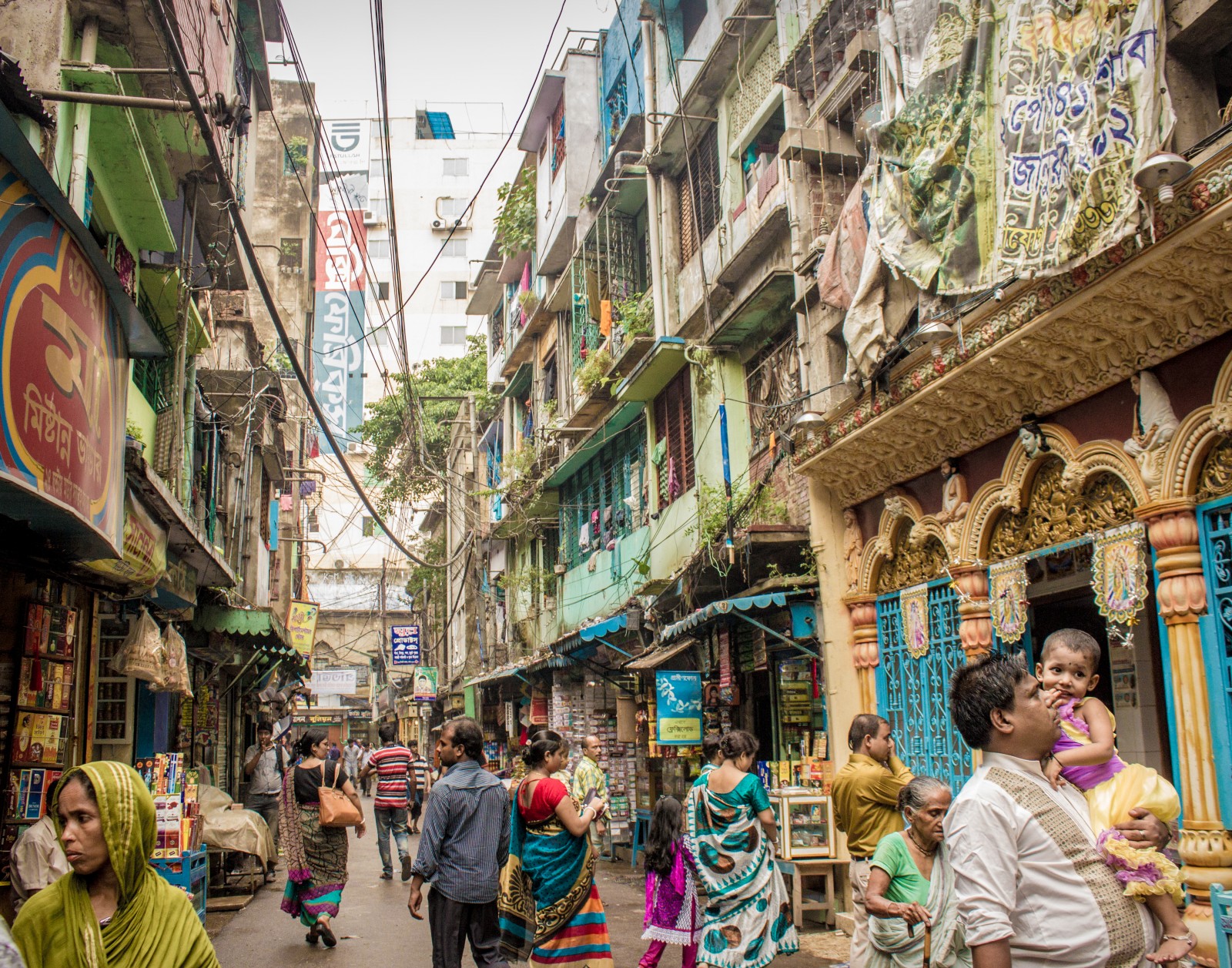
Typical day in Shakhari Bazar – June 2014
Render Authenticity: Revisiting Tangible Heritage to Reflect on Historical Structure Network
Abstract by Prianka Smita
“When we build, let us think that we build forever. Let it not be for present delight nor for our use alone. Let it be such work as our descendants will look upon with praise and thanksgiving in their hearts.”
-John Ruskin
Shakhari Bazar in Old Dhaka, Bangladesh, was one of the first streets to be built in the region of South Asia, using the river network as major transportation route and home to invaluable artisans in the 17th century. It is a sanctuary to a very specific ethnic group, and the only known home to some craftsmen. Therefore, this street is a rich treasure of both tangible heritage and ‘intangible heritage’.1 Unfortunately, the survival of these crafts is under threat, as the artisans seem to be changing their livelihood due to disconnected cultural ecology.
With the help of its artisan inhabitants, Old Dhaka has been an area with buildings of architectural beauty as well as historical, religious and cultural significance since 1608. “They are eloquent testimony to the history, culture and tradition. These buildings are ‘images’ of the past with which people still identify Old Dhaka”.2 But sadly, most of these historical buildings are either diminishing through ignorant renovations or collapsing due to neglect, resulting in hazardous living conditions for the unique artisans and migrants. If these present conditions persist, it will not be long until many of these structures, along with the intangible heritages they house, are lost forever.

Timeline showing the planned areas during the evolutionary changes in Dhaka City starting in 1600s
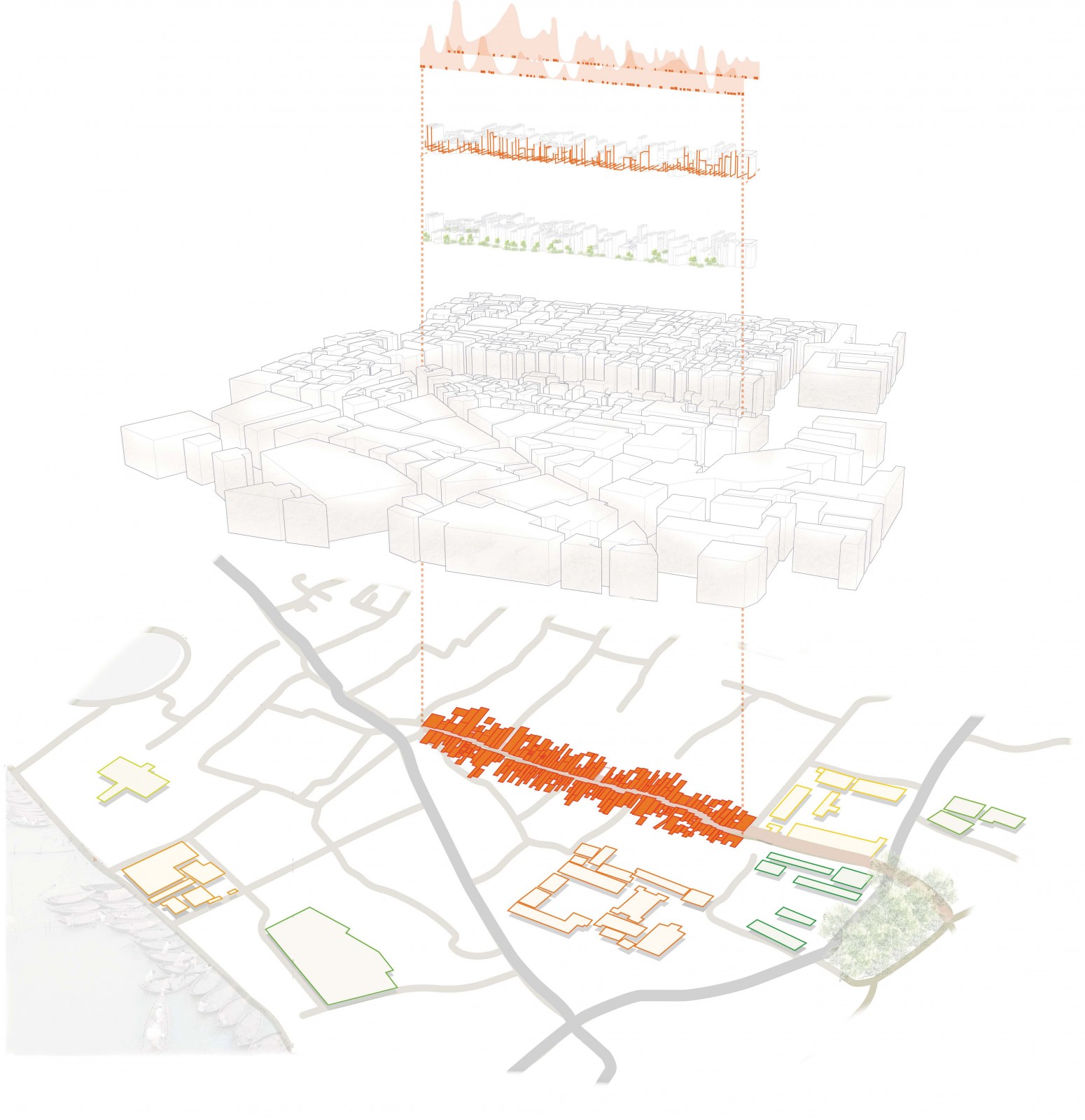
Delayered Old Dhaka and Shakhari Bazar showing the urban spatial network and elements
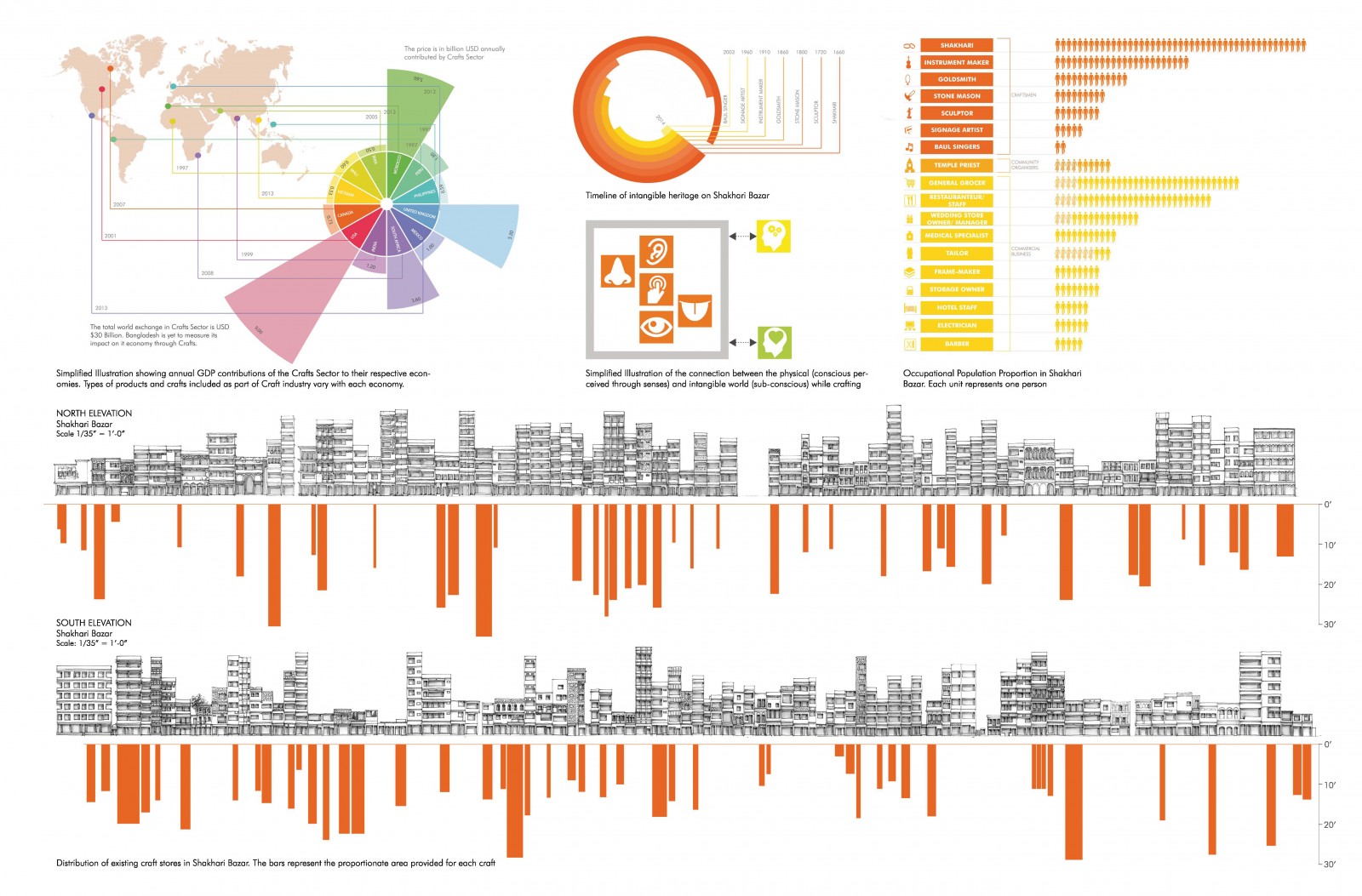
Existing elevation and craftsmanship on Shakhari Bazar
Comprehensive research has led me to propose multi-disciplinary schematic strategies of spatial interventions that aim to rationalize the decentralized elements of craftsmanship through formalized institutionalization thereby encouraging dialogue, as well as additional schematic strategies that could authentically restore heritage structures and promote inclusion of the locals and artisans of Shakhari Bazar. To establish a sustainable and educated restoration of the tangible and intangible heritages of Shakhari Bazar, and maintain the integrity of the live heritages they house, it is essential to pursue both these strategies simultaneously. This thesis proposes to instigate a healthy and informed dialogue between the formal bodies and informal systems of Shakhari Bazar to create a common goal of sustainable micro economy that refuses to accept uniformity and the disappearance of memory.
1 The term ‘intangible heritage’ has been popularized by UNESCO, and it includes traditions and cultural living adopted from the ancestors
and passed on to the descendents. These traditions include rituals, festivals, craftsmanship, performing arts, and other practices and skills passed on from generation to generation.
2 IABNL. 1989. News Letter, Institute of Architects – Bangladesh (IAB), vol. 1989, Dhaka: IAB
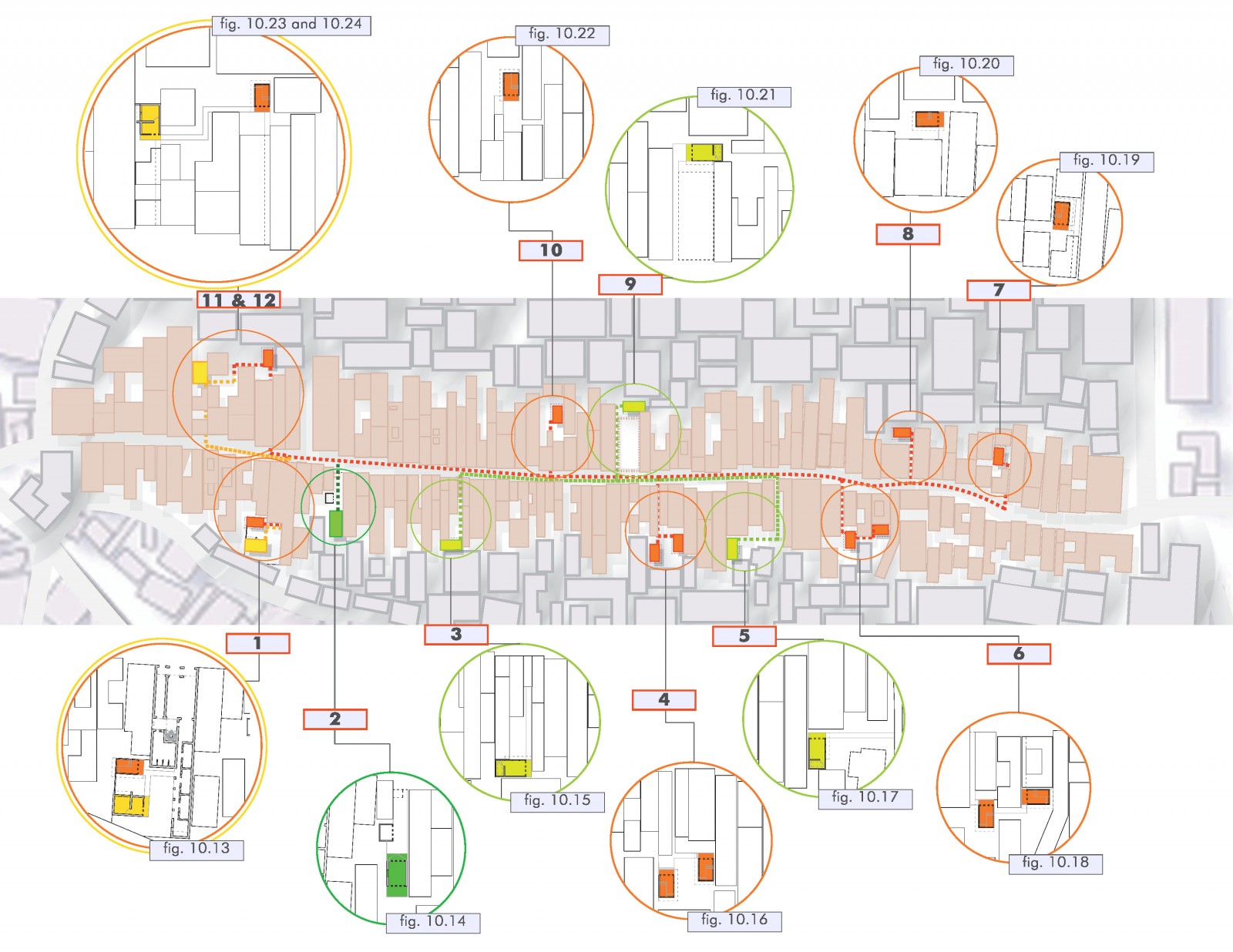
Key plan of Shakhari Bazar showing the proposed spatial network of Craft Schools located at various ‘pockets’ of the street.
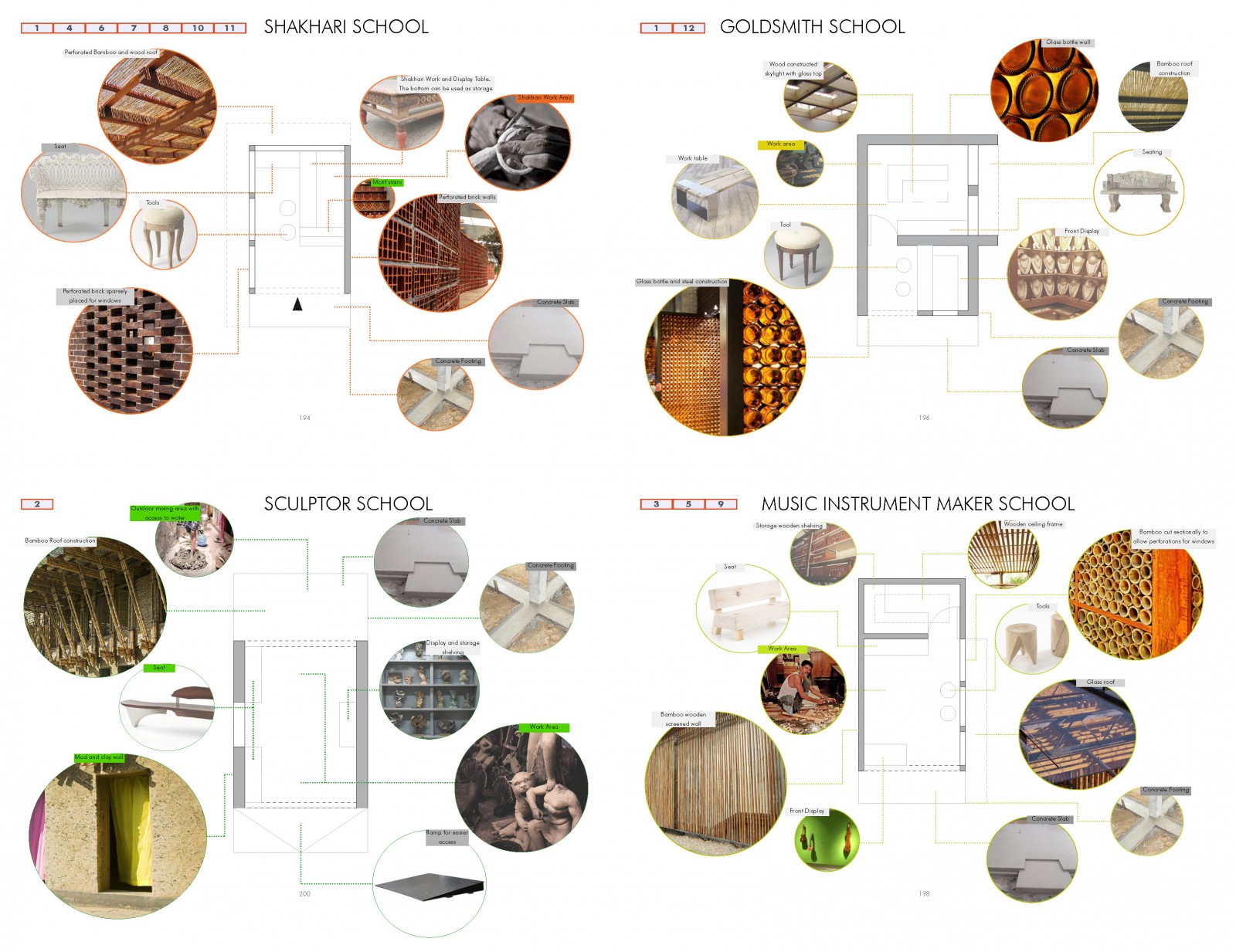
Plan of proposed model workshops for Crafts Schools and the materials and type of craftsmen required for its construction
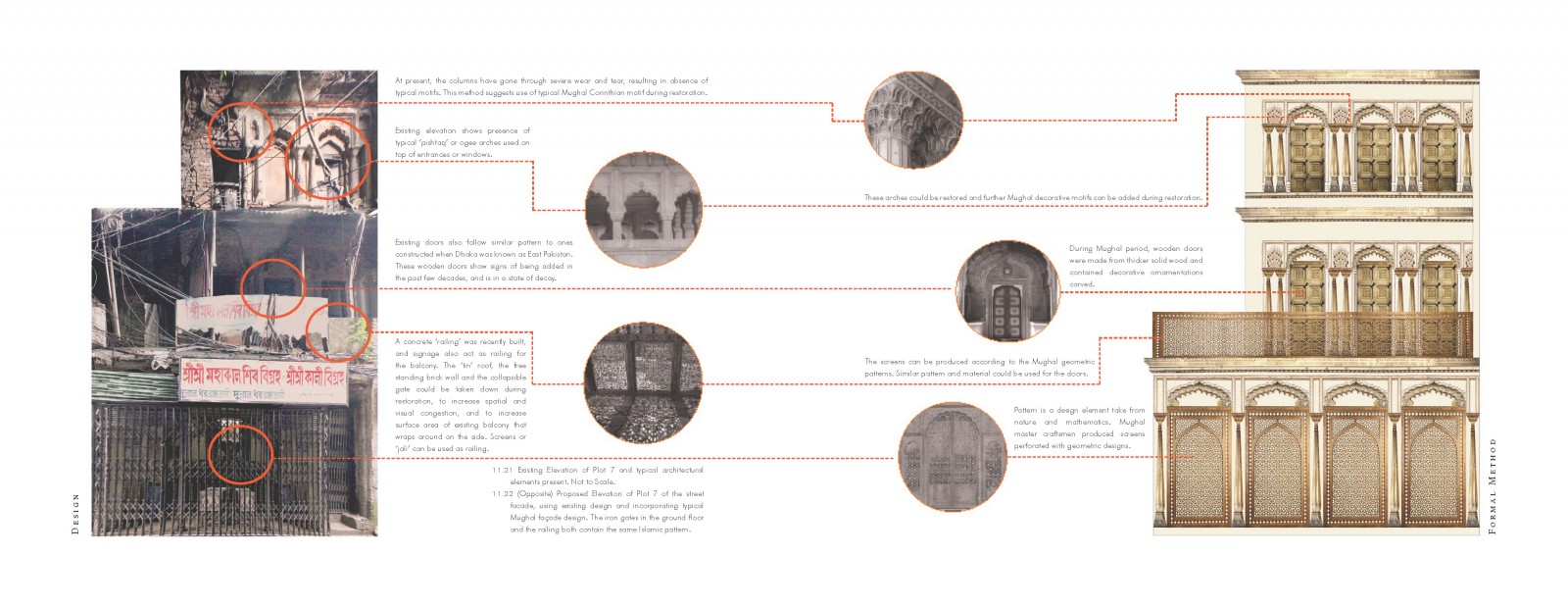
Existing Elevation of a selected heritage structure and typical Mughal architectural elements present. Proposed restoration of the street facade uses existing design and incorporates typical Mughal pattern and style.
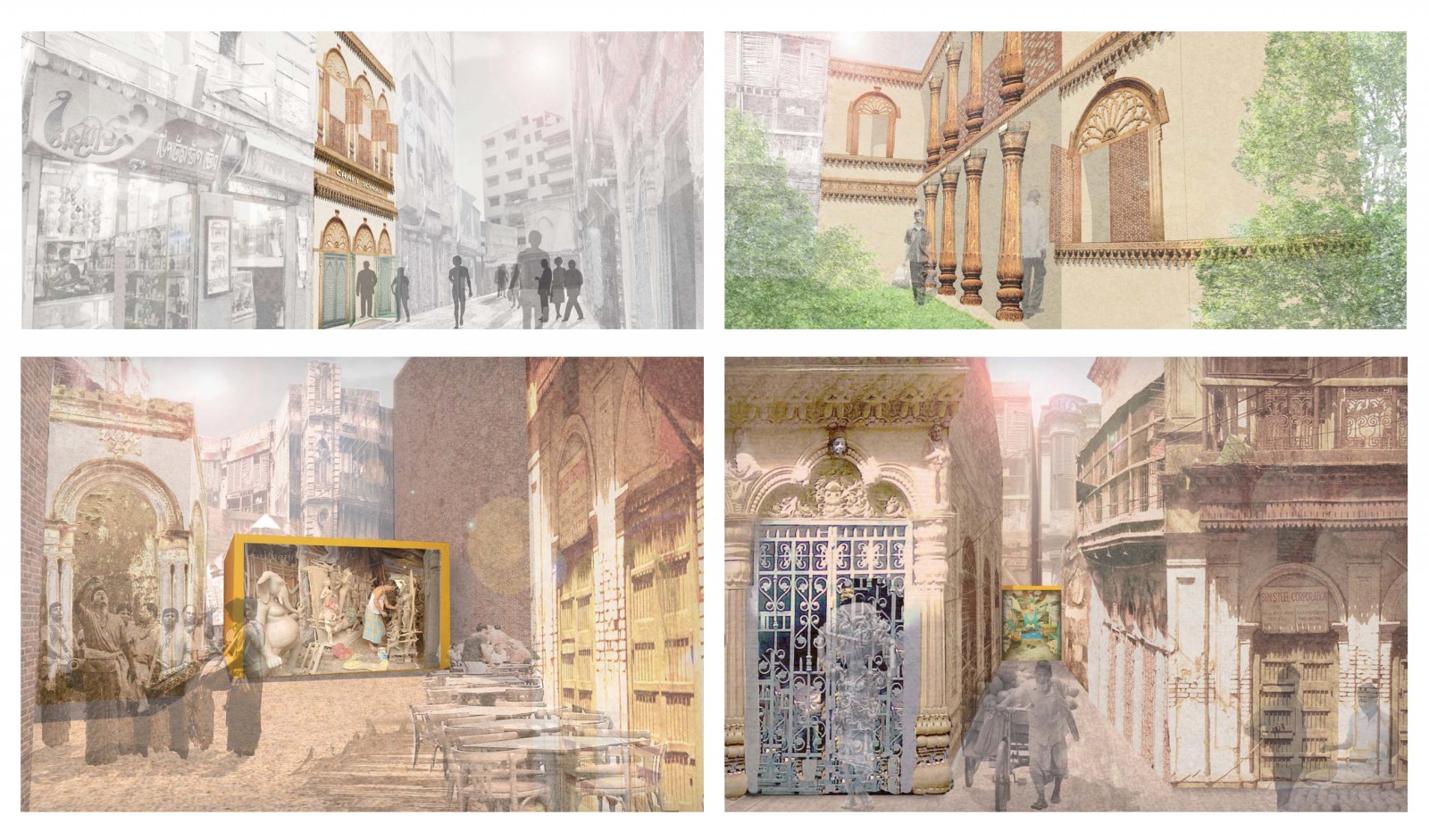
Visions of proposed strategies containing a Craft schools and selected restored heritage structures. The street could act as a haven of sustainable ‘living’ intangible and tangible heritage.
The examining committee is as follows:
Supervisor: John McMinn, University of Waterloo
Committee Members: Adrian Blackwell, University of Waterloo
Mona El Khafif, University of Waterloo
External Reader: Dr. Luna Khirfan, School of Planning University of Waterloo
The Defence Examination will take place on Tuesday September 15, 2o15 at 6:30 PM at the BRIDGE Centre for Architecture + Design at 35/37 Main Street.
Prianka Smita is a graduate student at the University of Waterloo School of Architecture. She grew up in the military environment of the east in which she was expected to serve her country. Currently in the second year of her masters studies, she is developing her thesis entitled Render Authenticity which enables her to engage in a dialogue between her passion for artistry and devotion to the progress of her native country. This pursuit brought her to return to Bangladesh in the summer of 2014 to conduct research. She says of her daily working methods, “I doodle when I want to organize my most obscure thoughts, listen to music when I want to be inspired, and write when I want to have a conversation with myself.”



Leave a Reply